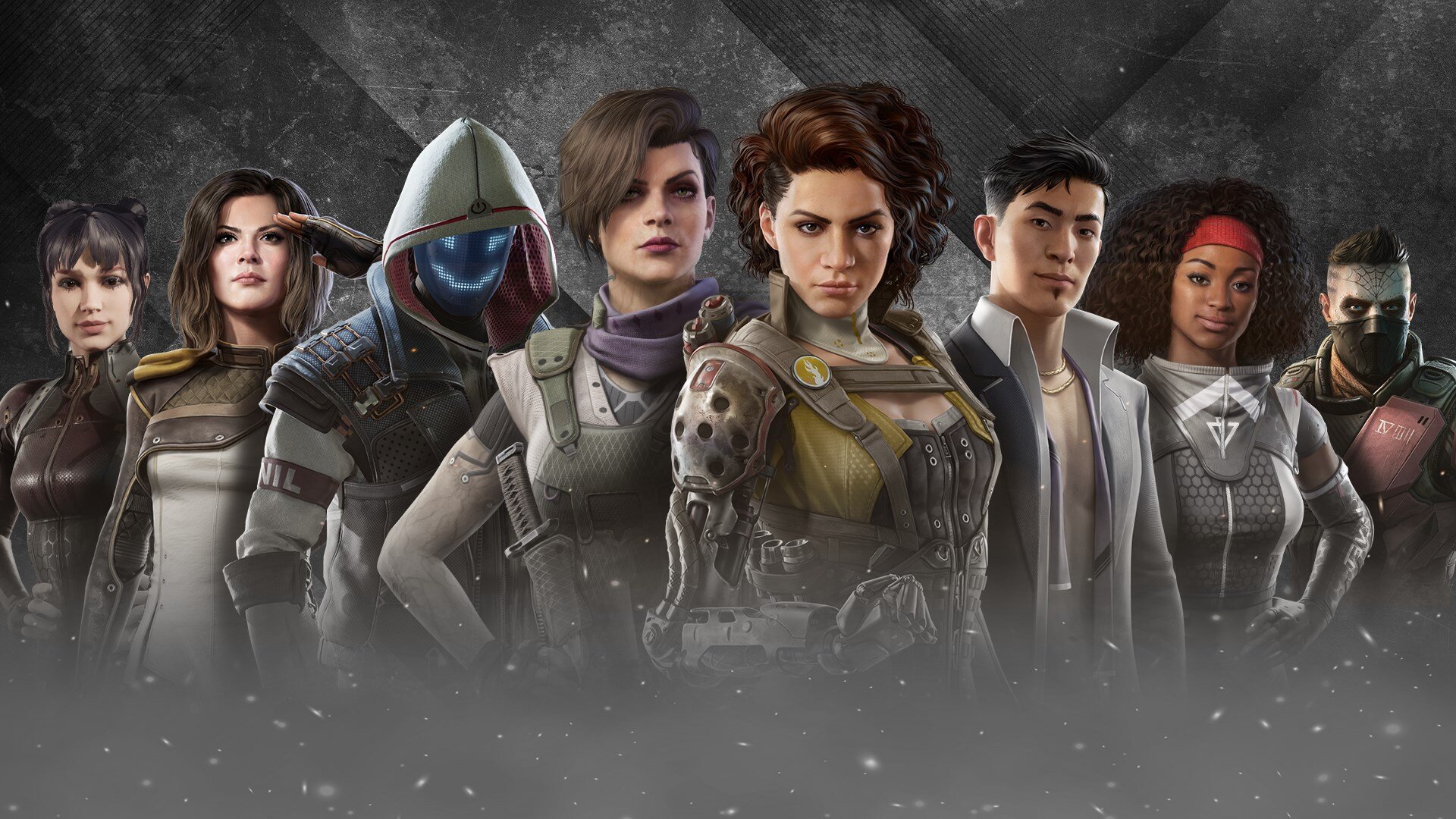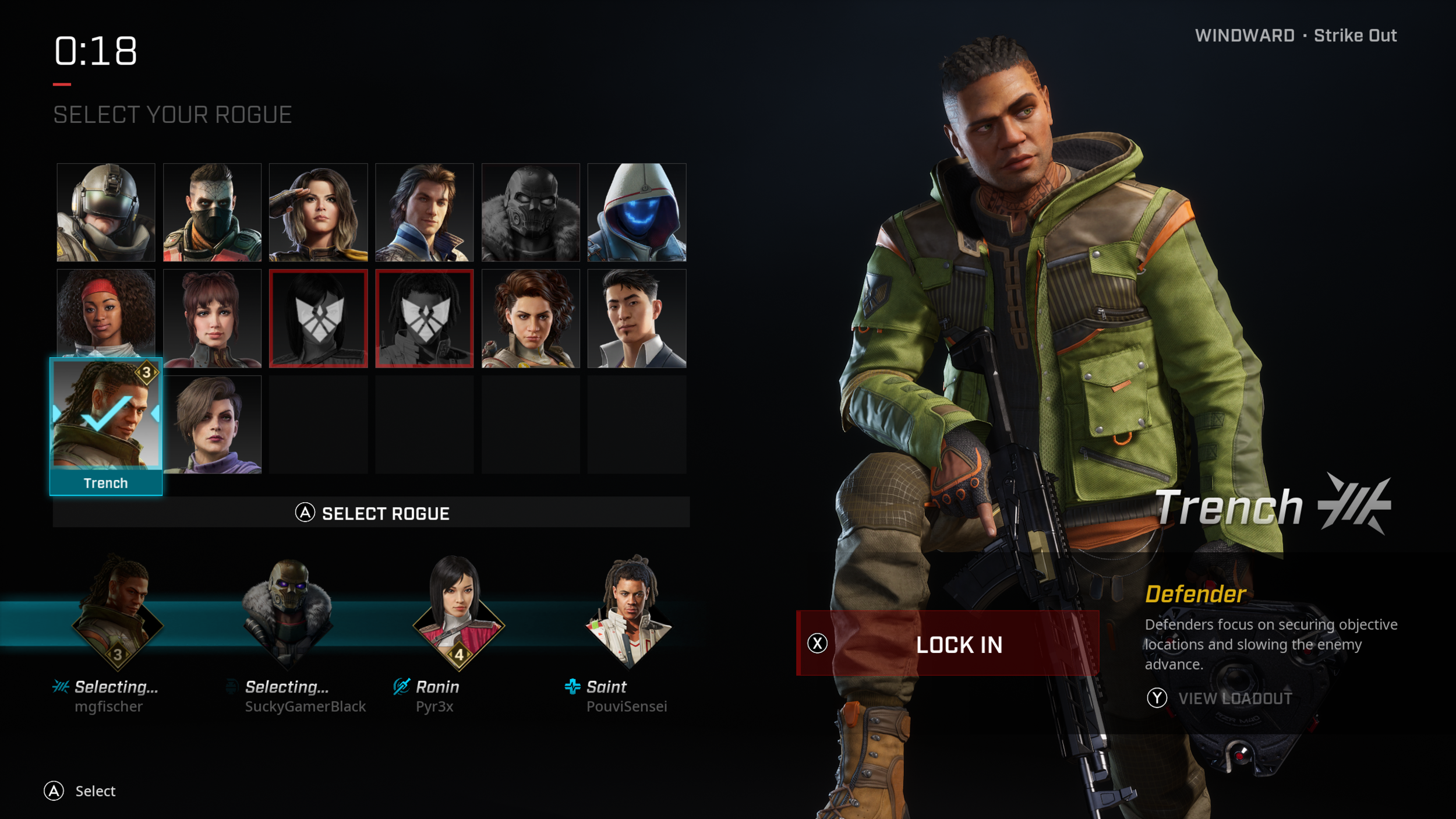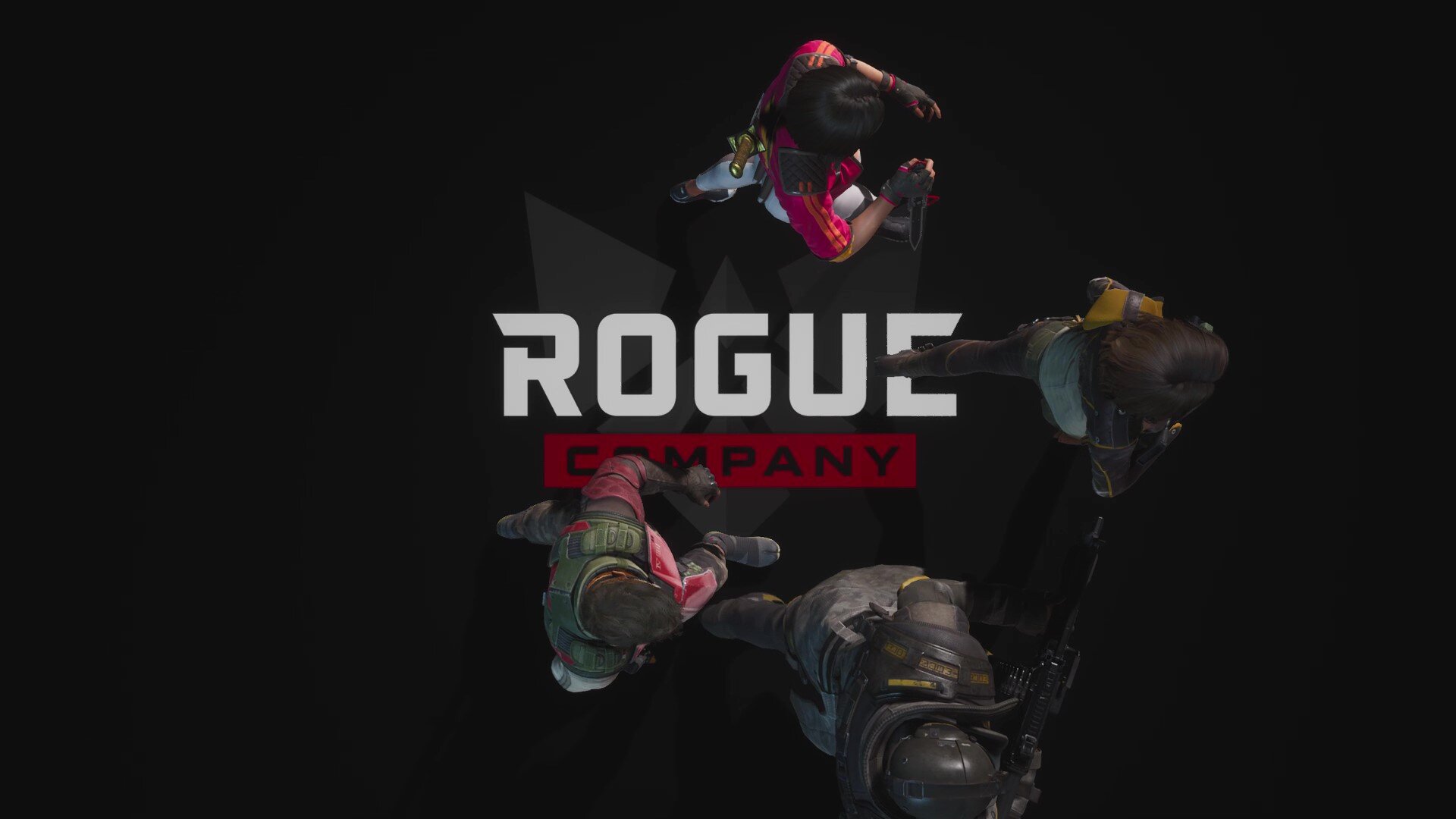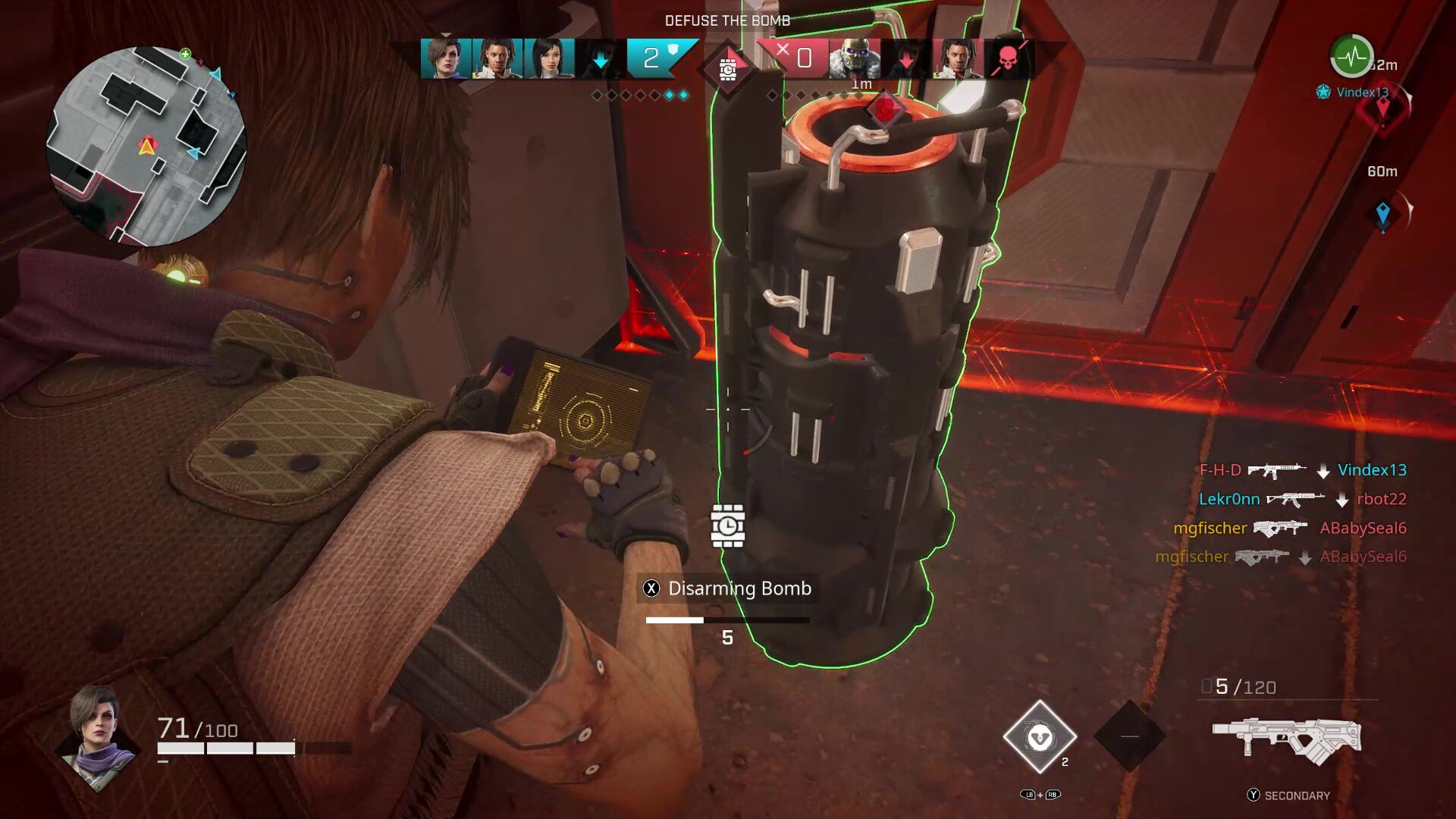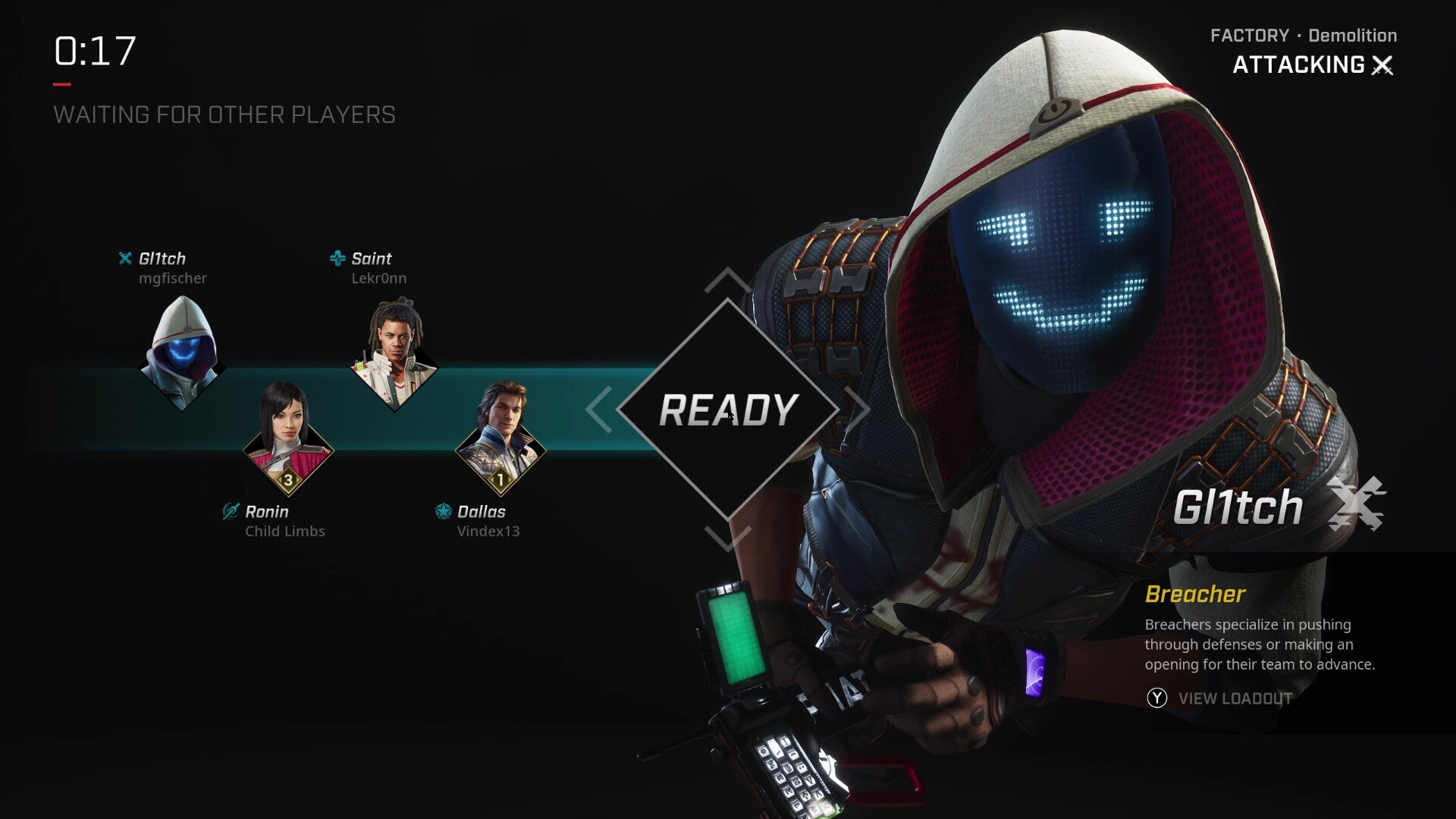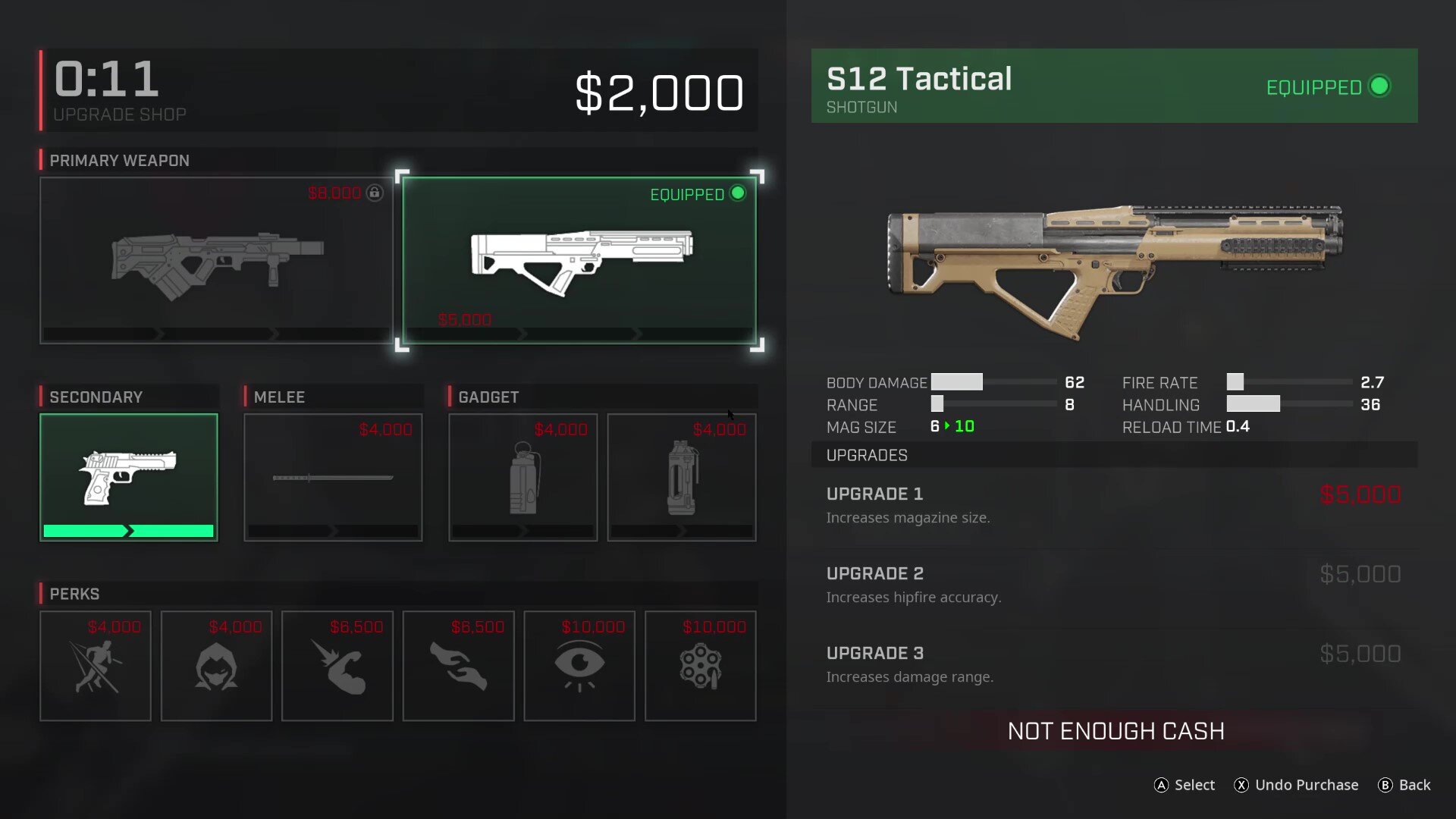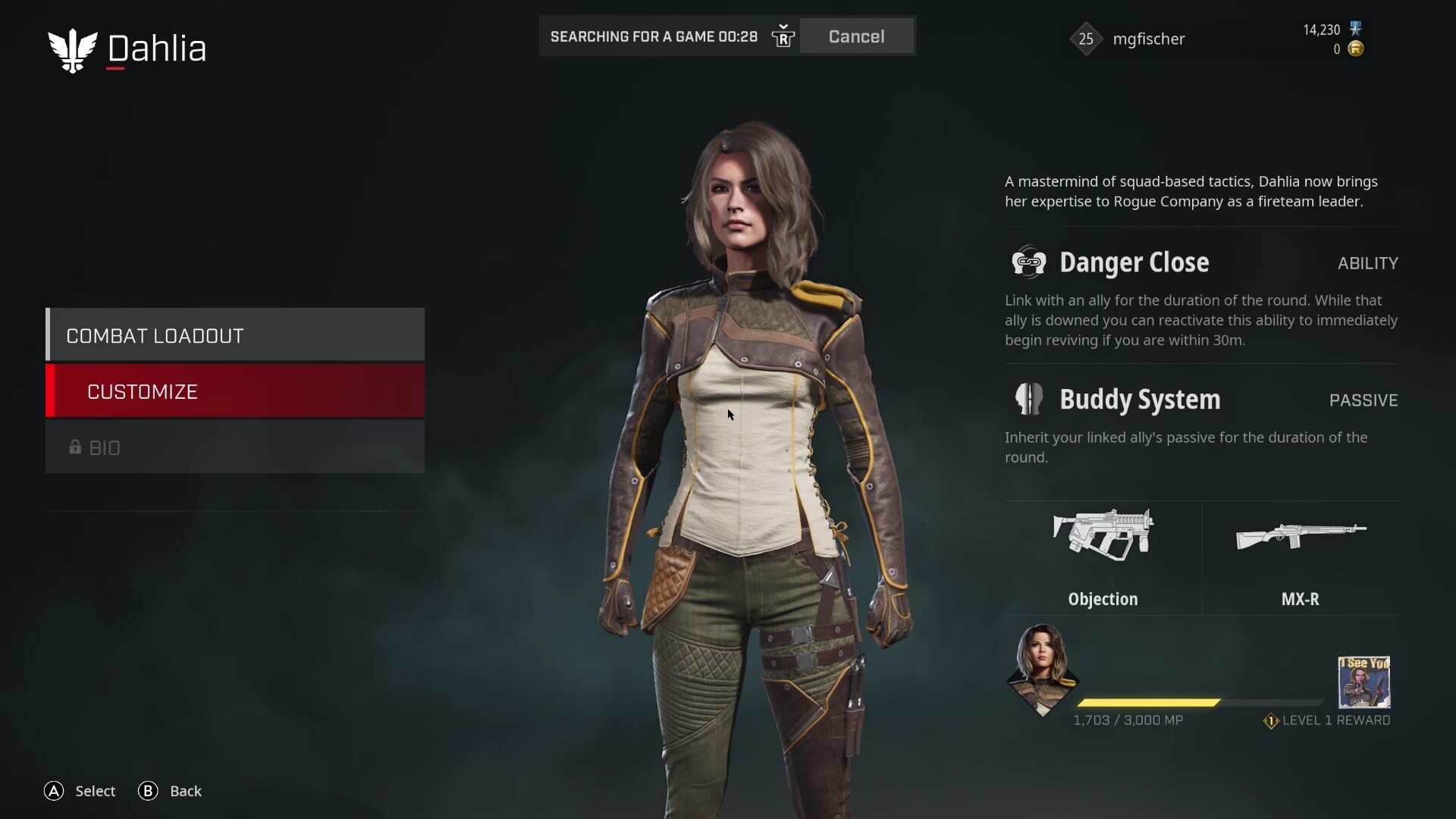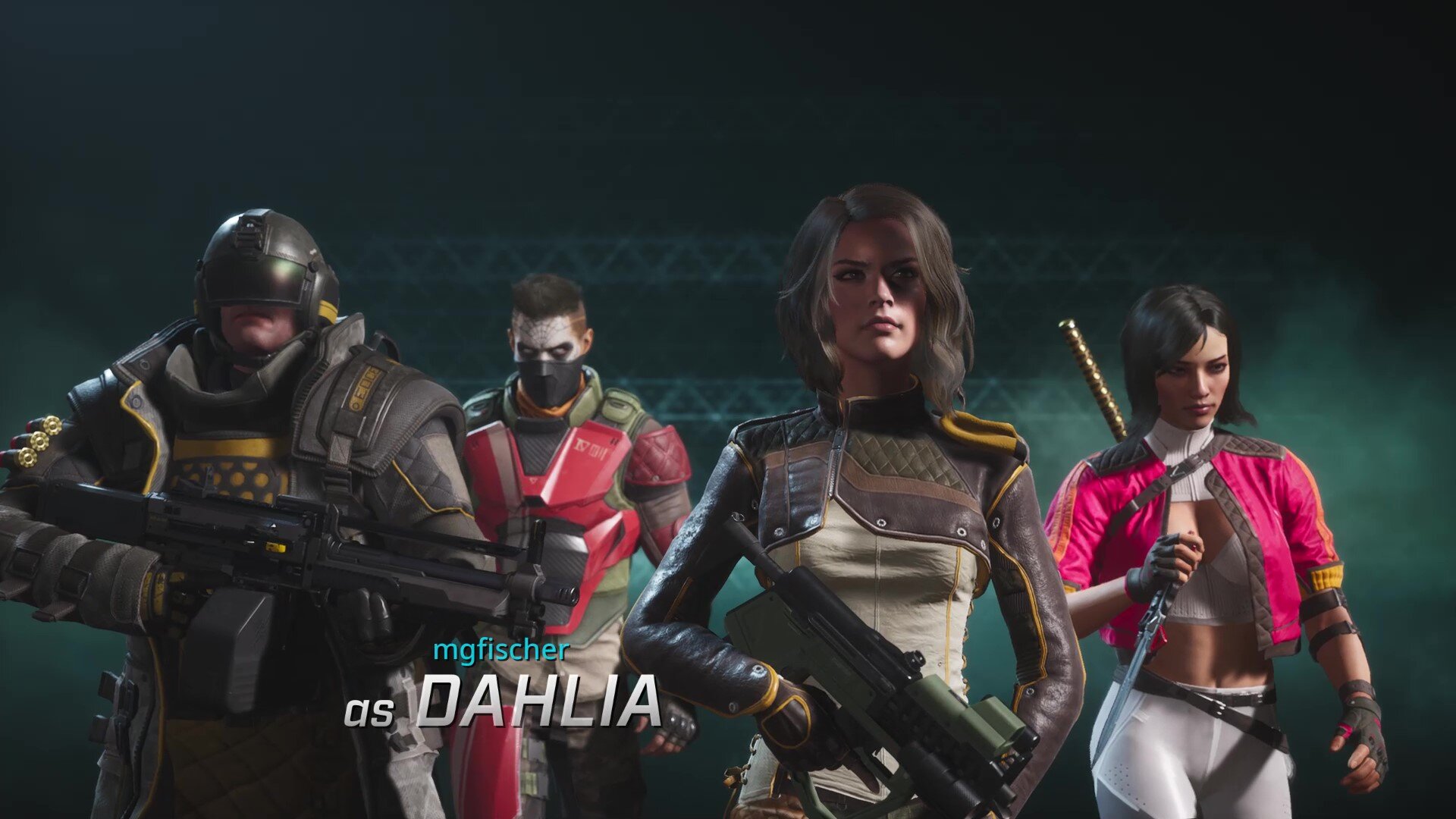Rogue Company Review
Formerly on GameCrate, now defunct.
The Newest Kid on the Block Comes Out Swinging
Rogue Company is a third-person 4v4 shooter developed by First Watch Games and published by Hi-Rez Studios out of Alpharetta, Georgia. Let me start out by saying: what a breath of fresh air. From the excellently polished visuals to the inherently simple combat, Rogue Company skips all the complexities of modern shooters and aims straight for gameplay. The controls are intuitive, if still a tad buggy, and the three objective-based modes are compelling.
Screenshot taken in-game by the author.
One of Rogue Company’s weaknesses is also its strength: originality. From Overwatch and Apex Legends, to Counter Strike: Global Offensive and Fortnite, Rogue Company has seemingly borrowed concepts from everywhere. Yet, it truly merges the best of everything, cherry-picking concepts like Apex’s famous ping system, Fortnite’s cosmetics store layout, and Overwatch’s hero loadout style. Because Rogue Company only takes the best concepts and merges them together, it still feels original, without feeling like another derivation of the most popular games, and that’s important to gameplay feeling fresh. The bombastic music in the game doesn’t hurt, taking the instrumental from Run The Jewels’s Legend Has It and throwing it behind each player-select screen before games.
Screenshot taken in-game by author.
Of course, it’s the lack of any sort of Battle Royale mode that makes Rogue Company stand out at the moment. Taking a queue from Riot Games’s VALORANT, Rogue Company takes players back to a simpler, objective-based game with clear goals and clear winners. Implementing Easy Anti-cheat software, there don’t seem to be any hackers here yet, which have now plagued Activision’s Warzone for weeks on end, and that too, is a plus.
Playing with friends has never been easier, as the self-dubbed “RoCo” is cross-platform on PC and all consoles, including the Nintendo Switch! Many console players will be relieved to learn that they will not be matchmade with PC players unless they share a party with a PC player. As a PC gamer myself, playing with friends on PS4 has been a blast, and I highly recommend playing RoCo in a group. The communication required to be successful in a mode like Demolition, similar to CS:GO or CoD Search and Destroy, is vital. Plus, playing with friends makes the already compelling gameplay even more exciting.
Let’s talk about the modes in Rogue Company before getting to the Rogues themselves. There are only three, boasting an assortment of 10 well-polished and often interactive maps, which is a great start. First, there is the aforementioned Demolition. This one is the most tactical of the three, requiring teams to communicate and collaborate to defend or plant a bomb on one of two objectives. The ping system comes in handy, but a good ol’ microphone is definitely a win here. I found myself spamming the “enemy here” pings most often, only rarely using other contextual pings. Victory here comes in the form of a successful bomb detonation, a defuse of said bomb by the opposition, or a team wipe. There are no respawns, and it is a first to 7 mode.
Screenshot taken in-game by the author.
Next, there is Extraction, a mode similar to Cyber Attack, for all you Modern Warfare players. There is a single objective that can be “hacked” to activate, with both teams trying to hack it first. Victory comes in the form of a team wipe, a successful countdown, or a successful defuse for the opposition. There aren’t respawns here either, and this is a first to 5 game mode.
Lastly, there is the most unique mode: Strikeout. Strikeout plays most similarly to a game mode I have actually played in Destiny 2: Survival. Rather than points being racked up like a traditional TDM, Strikeout uses Respawns as points, but with a twist. There is an objective zone to capture, which will slowly eliminate the opposition’s respawns when held. This mode allows respawns until your team runs out, and is a first to 3 mode.
I have a group that plays Modern Warfare Search and Destroy nearly every night together, which has been a great way of staying in touch during COVID. Rogue Company is the first game to completely unseat Modern Warfare as our new nightly gaming regimen. That’s not an easy feat, and it speaks to the engaging gameplay, the Mastery system, and the team’s commitment to a fluid experience for the player.
Screenshot taken in-game by the author.
Now, let’s talk about Rogues. There are a total of 12 “Rogues” or playable characters at the time of writing this review. The approach taken for these characters is the combo of a hero-based game and a tactical shooter, similar to Riot Games’s VALORANT. Let me explain: each Rogue has their own unique perks, guns, gadgets, melee weapons, special ability, and passive ability. However, each player starts the game with only a Secondary, one of several different pistols, and some cash.
In the store, opened between each round, a player can use cash to buy their perks, guns, gun upgrades, melee weapon/upgrades, and gadgets. Because of this system, each round is important, because better performance equates to more cash earned. It also allows everyone to start off on relatively equal footing at the beginning of the game, and for in-game skill to pay out in a big way (literally!).
Screenshot taken in-game by the author.
There are definitely some over-powered hero-specific abilities and guns, but each seems fairly well balanced for counter-play. For instance, Saint, a clone of Apex Legends’ Lifeline character, has the ability to revive downed teammates from anywhere on the map, and is pretty much a staple on any team. However, the drone that Saint deploys to revive others is easily heard and seen, and can be destroyed as it hovers above the player being revived. Similarly, the only current sniper in the game, Phantom, is a monster from range with how easy it is to use her sniper rifle. Shutting an enemy Phantom down early in the game, however, is a great way to prevent her from earning the cash necessary to buy said rifle.
There are certainly Rogues that most teams tend to have due to their sheer power, such as Ronin, whose explosive-trap knife can get an easy triple down for unsuspecting grouped players; or Scorch, whose fire-infused rounds can make players rage-quit faster than the time it took to down them. There is counter-play here as well, as the knife is clearly visible and blinks red, and Scorch’s ability only lasts a few precious seconds.
Screenshot taken in-game by the author.
Thus, the game remains fairly balanced, and exploring each Rogue is fun and engaging, with a locked “Bio” tab promising deeper lore in the future. Each Rogue is fully voiced and has their own personality, and it has been a blast exploring each so far.
Here we come to the quandary, however, of spending money on this delightfully Free-To-Play game. Players are given 6 Rogues for free, including Saint and Ronin, as well as Dima, Dallas, Anvil, and Trench. In-game reputation is earned per game and can be spent to purchase additional Rogues. You can also buy a pack to unlock the rest of the roster for only $29.99. This, for me, was a no-brainer. The game is already worth $30 for me, as I’ve sunk nearly 24 hours into it, and supporting developers by purchasing their content is an awesome way to let them know that you want more of what they’re dishing out. In this case, I didn’t mind paying. Additionally, real-world money can be spent on “Rogue Bucks” to then purchase in-game cosmetics, of which there are currently precious few. It is great to see that this game in not going the “Pay-To-Win” route, and that each Rogue is unlockable through grinding reputation points.
100 Thieves looks to be an early proponent of the game, releasing two content packs in the store, unsurprising for such an enterprising upstart company, and I’m hoping this means there is general interest in an esports scene coming to fruition for RoCo’s future.
Screenshot taken in-game by the author.
Today, October 14, marks the first major update since the game’s release October 1, 2020. A new map has been added, along with a much needed and long anticipated Player Identity system, more Rogue Mastery rewards, and new cosmetics.
Prior to the update, Rogue Mastery felt lacking, only offering a reward at Level 1 and Level 3. Now, there are rewards for each level, and a way to customize player emblems, banners, and borders. This very much increases the game’s replay value, and is a most welcome addition to keep the community growing and playing.
All in all, Rogue Company is a reliably fun, engaging, and well-positioned F2P title from the publishers behind Paladins and Smite. I’m very interested in following the progression of this game, and am excited about the potential it has. Though it borrows many of its concepts from other games, it manages to feel fresh and new, and utilizes its lack of real originality to leverage its top-notch gameplay.
Screenshot taken in-game by the author.
Overall Score: 8
Innovation: 6
Nothing about Rogue Company’s concept feels new on its own, but when put into the mix, the game feels unique and fresh. While there isn’t real innovation happening here, there is a return to compelling gameplay over cash-grab tactics, and we’ll take that any day.
Personality: 10
From the Rogues to the launch screen music, the game oozes a swaggering persona. This game is less about a story-fueled dramatic backdrop, and more about sauntering into an intense gunfight feeling like a boss.
Gameplay: 8
The gunplay in this game is crisp and fluid, and feels much less punishing than games such as VALORANT or Warzone, where missing one shot could send you to the lobby. Headshots make a satisfying “DINK!” and abilities are useful and available often. Each mode stands out in its own right, and the 4v4 intensive teamfights are thoroughly engaging.
Visuals: 8
Running on my PC on Ultra settings, this game looks damn good. The backdrops for each map are colorful and vivid, and the graphical fidelity holds up well. I have yet to experience any latency or drop in framerate, and the game is only 12 GBs. While it may not be anything too special, it certainly has the polish to hold itself up as a next-gen title when new consoles launch.


